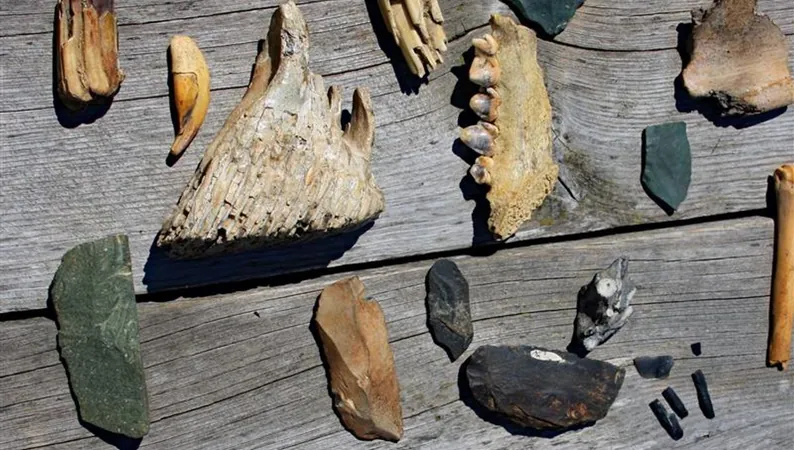
Ancient Affairs: How Early Humans Interbred With Three Different Denisovan Populations
2024-11-11
Author: Wei Ling
Our ancient relatives weren't shy when it came to love (and more) - and today's genetic data is an intriguing testament to this prehistoric promiscuity. Recent research reveals that early Homo sapiens not only mingled with the Denisovans—a long-extinct human species—but did so with at least three separate Denisovan groups. This interbreeding has left its mark on human DNA across the globe.
Dr. Linda Ongaro, a leading researcher on this study, emphasizes the complexity of human evolution, countering the misconception of a tidy, linear progression from a singular ancestor. Instead, ongoing discoveries show that the intermingling of different hominins significantly shaped modern humans. The Denisovans, first identified in 2010 when scientists sequenced DNA from a single finger bone unearthed in the Denisova Cave in Siberia, were evidently well-acquainted with our ancestors.
Initially, scientists believed that only populations in Papua New Guinea bore traces of Denisovan DNA, estimating that up to 5% of their genome could be attributed to these ancient hominins. However, newer studies have revealed that traces of Denisovan genes appear in East Asian, South Asian, and Indigenous American populations as well.
For years, the prevailing theory suggested that a singular encounter was responsible for introducing Denisovan DNA into our genetic makeup. But Ongaro and her team have collected and analyzed extensive evidence that points to multiple instances of interbreeding. "The Denisovan fossil record, unlike that of the Neanderthals, is sparse, consisting mainly of a few bones and teeth," Ongaro explains. "However, by examining the Denisovan segments still present in modern human genomes, we can identify evidence of at least three distinct interbreeding events."
These ancient Denisovans, who roamed Eurasia long before modern humans, began diverging into multiple lineages between 409,000 and 222,000 years ago. The earliest group interbred with the ancestors of today’s East Asians, while two additional Denisovan lineages contributed to the genes found in Papuans.
Interestingly, these Denisovans had already developed key genetic adaptations to thrive in extreme environments—capabilities that modern humans would benefit from through interbreeding. For example, one significant genetic locus related to hypoxia tolerance, known as EPAS1, traces back to the Denisovans who mingled with East Asians. This adaptation is particularly vital for populations like Tibetans, who live at high altitudes with lower oxygen levels.
Another notable genetic adaptation linked to lip metabolism, identified in Greenland’s Inuit population, likely originated from these ancient interactions. The unique haplotype in the TBX15/WARS2 region helps the body more effectively break down fats, offering thermoregulation advantages in cold climates, demonstrating how interbreeding with Denisovans has equipped modern humans with vital survival traits.
Today's revelations underscore the intricate history of human evolution and the complex web of interbreeding that has ultimately forged the genetic tapestry of humanity as we know it—so next time you ponder your family tree, remember it might just have some ancient Denisovan roots!


 Brasil (PT)
Brasil (PT)
 Canada (EN)
Canada (EN)
 Chile (ES)
Chile (ES)
 Česko (CS)
Česko (CS)
 대한민국 (KO)
대한민국 (KO)
 España (ES)
España (ES)
 France (FR)
France (FR)
 Hong Kong (EN)
Hong Kong (EN)
 Italia (IT)
Italia (IT)
 日本 (JA)
日本 (JA)
 Magyarország (HU)
Magyarország (HU)
 Norge (NO)
Norge (NO)
 Polska (PL)
Polska (PL)
 Schweiz (DE)
Schweiz (DE)
 Singapore (EN)
Singapore (EN)
 Sverige (SV)
Sverige (SV)
 Suomi (FI)
Suomi (FI)
 Türkiye (TR)
Türkiye (TR)
 الإمارات العربية المتحدة (AR)
الإمارات العربية المتحدة (AR)